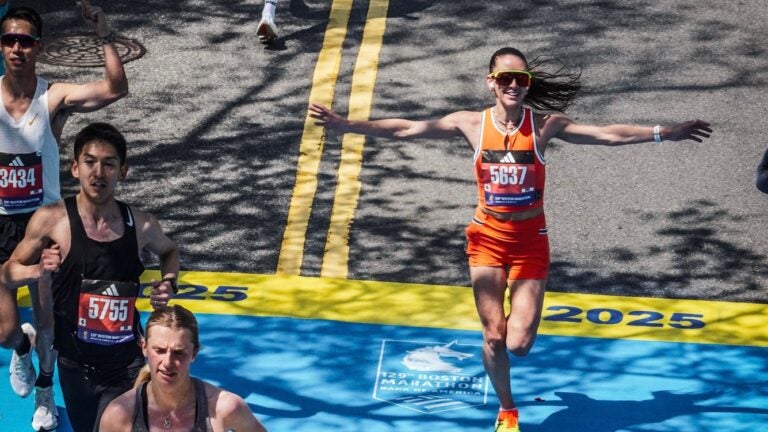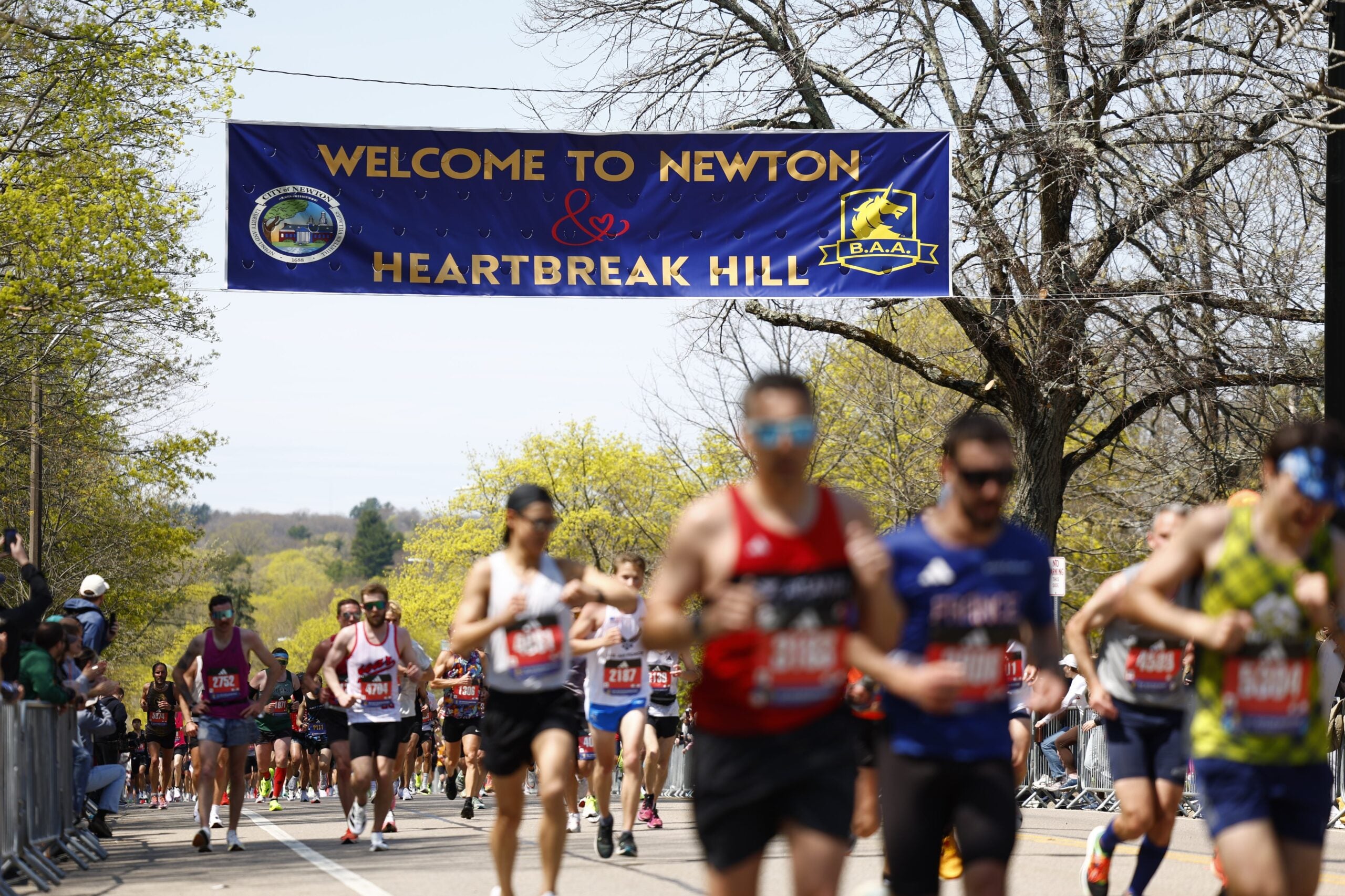Boston Marathon
Registration for the 2026 Boston Marathon will open this fall from Sept. 8-12.

As qualifying bibs for the Boston Marathon get harder to come by each year, a significant rule change is on the horizon.
The Boston Athletic Association announced Monday that registration for the 2026 Boston Marathon will open this fall from Sept. 8-12, with the qualifying window for the 2027 race beginning on Sept. 13.
More notably, qualifying for the 2027 Boston Marathon will include a major rule change, as marks set at courses with significant downhill elevation profiles will incur an adjustment to their times.
Qualifiers from races featuring 1,500 feet to 2,999 feet of net-downhill elevation change will effectively have five minutes added to their times, while qualifiers from races with from 3,000 to 6,000 feet of net downhill will have 10 minutes added to their times.
The change comes as the BAA tries to meet ever-increasing demand into the world’s oldest marathon, which is already tightening its time qualifying standards for 2026, with the new “time indexes” the first of their kind among the major marathons.
“We looked at the data over four years, not just a snapshot,” BAA CEO Jack Fleming told the Globe. “The data analysis told us that there was an advantage for runners who were using the downhill races in terms of their overall performance, and specifically when it came to achieving the qualifying standards for the Boston Marathon.”
Globe analysis of Boston Marathon entry lists showed that around 2,000 qualifiers for the 2025 race — nearly 10 percent of the field — came from races with at least 2,000 feet of net downhill as runners continue to look for every edge to shave time off their personal bests.
But as demand hits unprecedented highs in the post-COVID running boom, with the 2025 race receiving a record 36,393 applications (and turning away a record 12,324 qualifiers), the Boston Marathon has a narrow line of fairness to walk.
Implementing the new time indexes for 2027, Fleming said, seeks to give runners plenty of time to adjust.
“We wanted to give runners ample, long lead time,” Fleming said. “We know that runners, marathoners, look way out into the distance — figuratively and literally, I guess — and make their schedules. They think about their schedules, not just from one marathon to another but what they may be doing over the next year or two years.
“So this is the first such adjustment index for net-downhill races. And therefore, in addition to the ample time, we are getting going with it and committing to what these adjustments, the index, will be for two years — with the idea and the intention of continuing to analyze the performances that occur on net-downhill races.”

Rules governing elevation profiles in the marathon aren’t unheard of. The US Olympic Marathon Trials, which brings together the 400 or so best marathoners in the country to select the American team for the Olympics every four years, limits the downhill drop of qualifying courses to the 460 feet or so of net decline you’d find in Boston.
But among its World Marathon Major peers, and as the race with the most sought-after entry in the world of serious amateur marathoning, the BAA is taking an unprecedented step to ensure fairness in its qualifying process. With the Boston Marathon’s place at the forefront of the industry, there’s some pressure to get those big decisions right.
“Yes, the simple answer is yes,” Fleming said when asked if the BAA feels that pressure. “We were really on the one hand, mindful, and on the other hand, respectful of an individual’s plan or motivations or attempts to run the Boston Marathon — not just marathoners who were participating and posting performances at downhill races — but we’re continuing to see the overall demand increase. So the adjustment, the index, does recognize the overall demand into the Boston Marathon. And even, of course, we have the overall qualifying times standards, which are being adjusted for [2026].
“But when we consider all of the folks who are wanting to run the Boston Marathon, we wanted to be fair to them, as well. We didn’t want there to be an unfair advantage for those who were selecting a net-downhill race specifically for the purpose of running the Boston Marathon.”
Get the latest Boston sports news
Receive updates on your favorite Boston teams, straight from our newsroom to your inbox.
(Except for the headline, this story has not been edited by PostX News and is published from a syndicated feed.)

